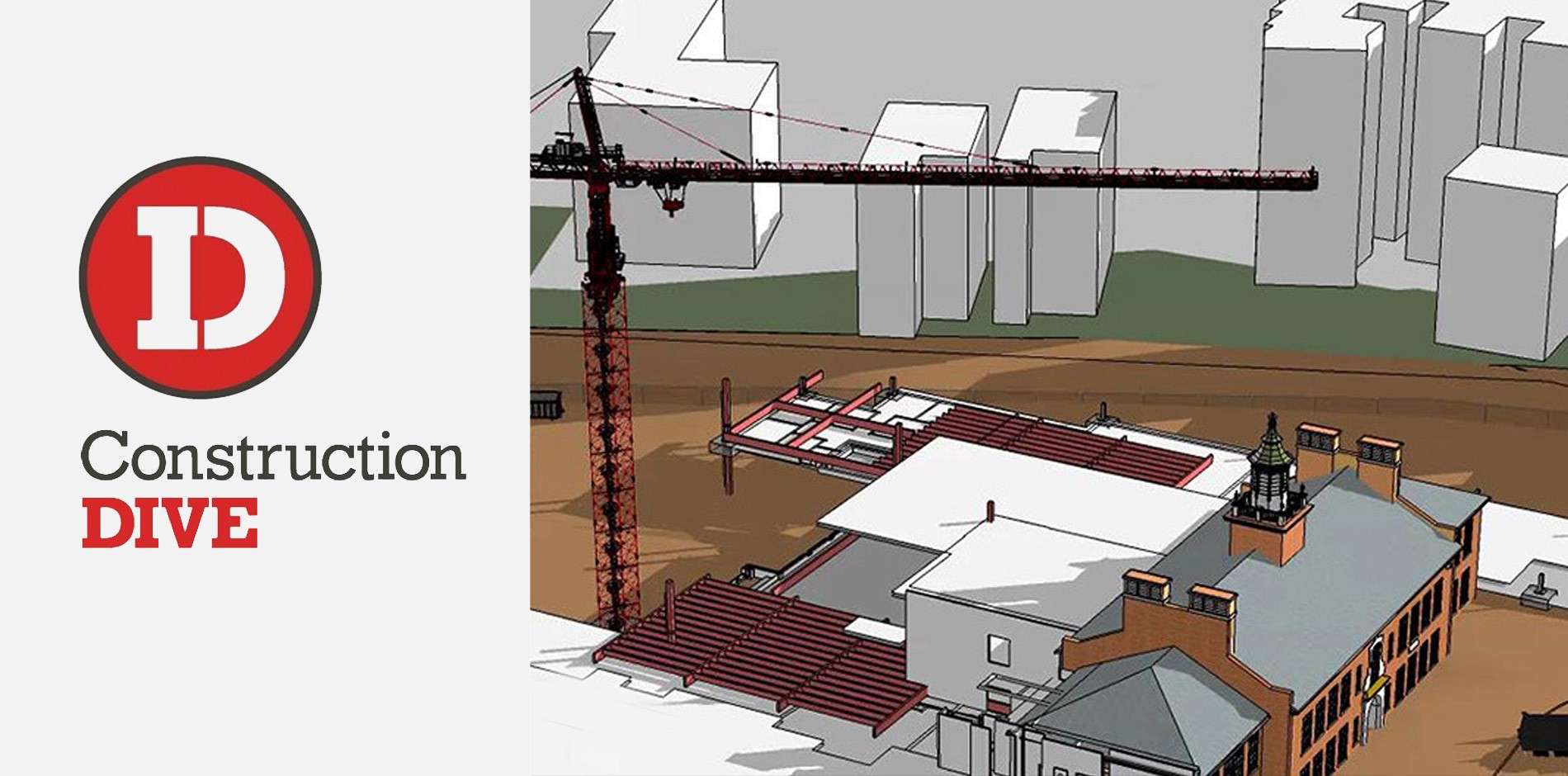Excerpt from Construction Dive:
Imagine donning a headset and taking a virtual stroll through a fully designed space, using a wand to make at-will changes to furnishings, windows and other elements, even peeling back finished walls to survey the underlying structure without leaving a mark behind. It’s the stuff of Hollywood movies — or at least it was before gaming technology merged with building information modeling (BIM) to create such imagery.
The marriage of the two technologies is changing the way construction professionals and designers do business with customers and with each other. And now, it seems the combination is on the verge of changing the industry as a whole.
The proliferation of BIM itself is a tremendous leap forward from previous construction modeling and graphics processes — such as foam core models — commonly used in the construction industry that were predominant up until about a a decade ago. In that relatively short period of time, and according to a recent Dodge Data & Analytics report, written in association with AEC software company Bentley Systems, BIM has provided construction companies with significant benefits, such as improved productivity and reduced costs, as well as given them a competitive advantage.
Globally, BIM is predicted to grow to $11.54 billion by 2022, and software companies and the industry’s BIM experts are pushing the boundaries of the technology's possibilities with gaming engines, also referred to as real-time engines, to create as rich of a virtual experience as possible.
For Amr Raafat, virtual construction planner at Shawmut Design and Construction, it’s all about "a wow factor."
Raafat said he has used a variety of platforms in the past, in addition to drafting software like Autodesk’s Revit, to achieve an impressive end result. However, now, "with gaming engine software, you can do basically anything in one interface," he said.
Raafat added, "That’s big, because you have this great flexibility." He said that, much like a video game, the technology allows construction companies to tell a story.
